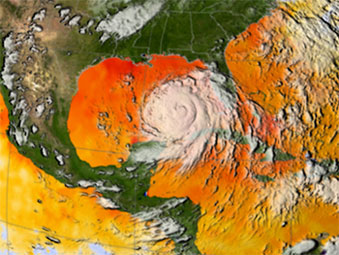2007 hurricane season to be weaker than expected says forecaster
2007 hurricane season to be weaker than expected says forecaster
mongabay.com
July 24, 2007
Forecaster downgrades 2007 hurricane season projections
WSI Corp, a private forecaster, cut its 2007 hurricane season outlook, saying there will likely be fewer storms than previously projected, reports Reuters.
WSI now expects 14 named storms, of which six will become hurricanes and three will become major hurricanes, down from last months forecast of 15 named storms, of which eight would become hurricanes and four would become major hurricanes.
“Because the ocean temperatures have not yet rebounded from the significant drop in late spring, we have decided to reduce our forecast numbers slightly,” said Todd Crawford, a WSI forecaster, in a statement.
Despite the downgrade, WSI still expects the 2007 season to be more active than last year,
 Warm ocean waters fuel hurricanes, and there was plenty of warm water for Katrina to build up strength once she crossed over Florida and moved into the Gulf of Mexico. This image depicts a 3-day average of actual sea surface temperatures (SSTs) for the Caribbean Sea and the Atlantic Ocean, from August 25-27, 2005. Every area in yellow, orange or red represents 82 degrees Fahrenheit or above. A hurricane needs SSTs at 82 degrees or warmer to strengthen. The data came from the Advanced Microwave Scanning Radiometer (AMSR-E) instrument on NASA’s Aqua satellite. The GOES satellite provided the cloud data for this image. Image Credit: NASA/SVS. |
WSI’s forecasts are more conservative than those put forth by Colorado State University’s Hurricane forecaster William M. Gray at the end of May. Gray and his colleague Philip J. Klotzbach said they expected 17 named storms and nine hurricanes in the Atlantic basin during the 2007 hurricane season, with a 74 percent chance of at least one major (Category 3, 4, or 5) hurricane hitting the U.S. coastline (average probability for last century is 52 percent) and a 50 percent change of such a storm hitting the U.S. East Coast (versus a 31 percent risk for the past century).
This post used information from Reuters, WSI, and previous mongabay.com articles.